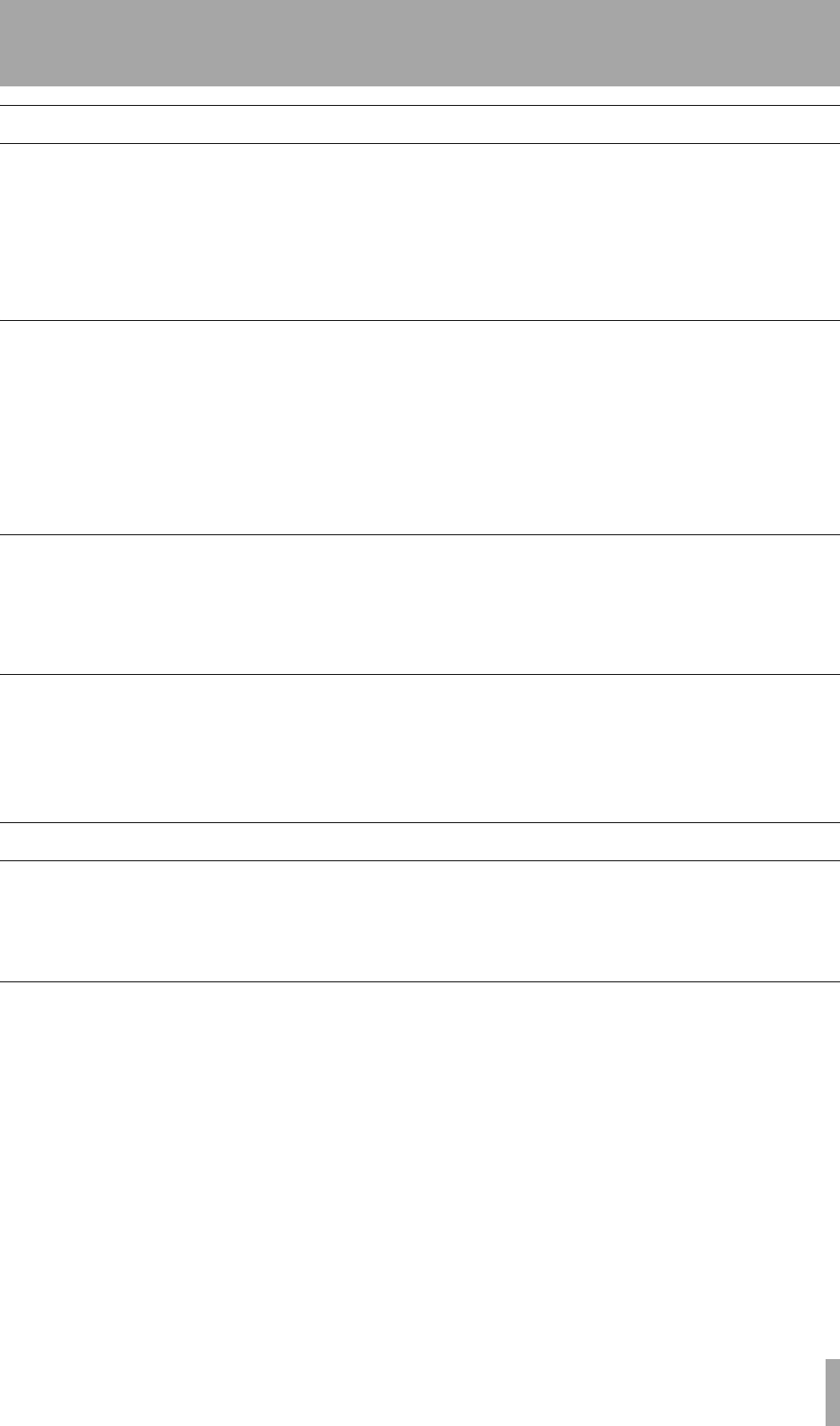
4 – Operation : Automating Groups
TASCAM DM-3200 Automation Guide 35
Automating Groups
There are several considerations and possibilities
when using the DM-3200 automation with grouped
controls:
• Creating a group containing controls that have
existing dynamic automation.
• Automating the Group Master.
• Creating a group containing controls that do not
have existing dynamic automation.
• Automating group slaves.
• Removing slaves from an automated group.
• Automation of hierarchical groups.
Grouping Non-Automated Controls
Create the group normally using the ST LINK/
GROUPING
display. The group master or slaves
within the group may then be automated.
A Group Master may be automated just like any
other control. The group slaves follow the group
master. Automation data is only written by the Group
Master. Any group slave that is removed from a
group no longer follows any mix moves written by
the Group Master. However, it continues to read its
own mix moves.
Any group slave may be individually automated just
like any other control. It reads its own moves, which
would be offset by the moves of the Group Master.
Grouping Automated Controls
It is possible to create a group containing controls
that have existing dynamic automation moves. In this
case, the mix moves of the group slaves are main-
tained while following the overall moves of the
Group Master. Essentially, this is using the move-
ments of the group master to trim the moves of the
group slaves. It should be noted that this does not
actually write Trim data to the group slaves.
Hierarchical Groups
Simply put, hierarchical groups are “groups of
Groups which operate the same way as Master and
groups” and can be very powerful mixing tools. Hier-
archical groups have Master Groups and Slave
Groups which operate in the same way as Master and
Slave controls in non-hierarchical groups.
Hierarchical groups are set up in the
GROUPING
LAYER
section of the ST LINK/GROUPING display.
Mix File Management
The DM-3200 automation system’s storage capacity
is determined by the size of the Compact Flash card.
The exact number of mixes depends on the type of
mix. Some control movements use up more events
than others. Pressing a
MUTE key uses one event,
while a complex fader movement uses many.
The Mix Data
The mix data itself contains Initial Status and
Dynamic data for all automated controls (“Auto-
mated Controls” on page 4). In order to store the set-
tings of non-automated controls such as the digital
trim values, those settings must be stored in a library
for automated recall. The mix data and library data
may then be archived via the USB and supplied TAS-
CAM Mixer Companion software to a personal com-
puter for archival.


















